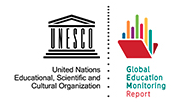 Coronavirus also has implications for data collection on education
Coronavirus also has implications for data collection on education
Questions around Covid-19 and education arise in the short, medium and long term. Right now, it is important to understand how to support teachers, parents, and students to mitigate the impact of school closures, especially for the most vulnerable Later on, we will need to understand the effects on entire school careers and beyond, and on countries’ progress towards the 2030 targets. Both perspectives will require quality data and analysis in the coming 2-3 years to understand and learn which of today’s activities worked or not, and what this means for continued support needs in the decade to come. But finding that data is not easy pickings.
For example, this year, more than two dozen MICS and DHS surveys are planned or are already underway. These are critical for informing on many low and lower-middle income countries’ progress towards SDG 4.
However, these surveys are likely to be disrupted. Fieldwork in many countries may be suspended to be resumed at another point in time, leading to data being collected across different school years, hampering interpretation. Both the DHS and the MICS ask about attendance at any time during the current school year rather than strictly ‘current’ attendance. However, in countries in the southern hemisphere, where schools closed shortly after the beginning of the school year because of the virus, or didn’t open to begin with, it is unclear to what extent households will answer the question consistently. Are children being home-schooled ‘attending’ school?
MICS and DHS questionnaires are thoroughly tested and attempts to re-rig them at short notice would risk doing more harm than good. Nevertheless, it is crucial to think about how to ensure they can serve their important monitoring role in the face of Covid-19. And to ensure that this year’s results can be comparable to other years despite the potentially challenging context.
One important aspect needed in this next set of data collection given the circumstances will be meticulous metadata. In particular, surveys should record whether schools in the household’s community were closed at the time of interview so that results can be contextualized.
Later analyses of the data will have to take more carefully than usually into account this information on when exactly the fieldwork was conducted, whether schools were closed, and the exact age of the children surveyed. It will be necessary to analyze single-year school cohorts rather than school-age populations as a whole: the effect of extended school closures are potentially quite different for children who were supposed to start school, those whose final year is cut short, and those who were in the middle of their schooling.
So far, the brunt of the crisis is borne by high-income countries with high school attendance rates and with several policy tools to support the more disadvantaged. However, that could change in coming days, as the crisis unfolds. And the key question, to which we will not have an easy answer, is the extent to which temporary disruptions or the cancellation of exams may have a permanent effect, terminating school trajectories that might have otherwise continued.
Looking at health data explains some of the complications. Even with the best data, the overall effects of the pandemic on health outcomes cannot be observed directly. Many indirect effects, such as excess mortality because overwhelmed hospitals cannot attend to other kinds of medical emergencies, can only be inferred through comparison with statistical models of what is likely to have occurred in the absence of Covid-19.
The same is true for the pandemic’s effect on education outcomes in the medium and long term. In other words, we need consensus models of the baseline trend of out-of-school or completion rates in different countries that the new realities can then be compared to. The GEM Report had already embarked on efforts towards that goal before the current crisis, and this now takes on further urgency.
It is often the way that the data you most need is the data that is hardest to get. Trying to look at statistics in any conflict-related or emergency situation can tell you that. Making sense out of today’s education upheaval with data will be critical to finding our way out of it. It will show us where our attention needs to focus, but also teach us vital lessons should such a crisis ever occur again.
0 Comments